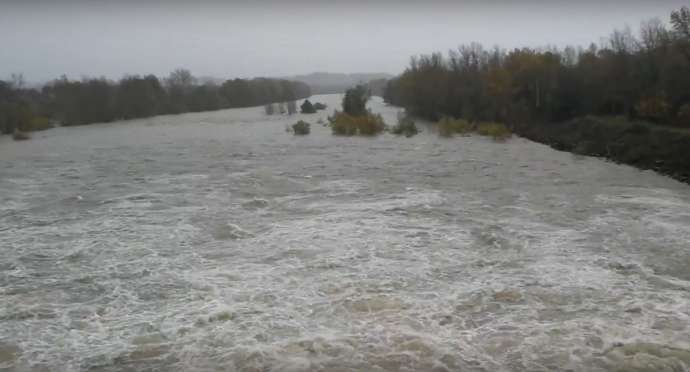STA, 26 November 2019 - In the wake of the first heavy rainfall of this autumn, locals living along the river Drava warned the river had started flooding at a relatively low flow because the riverbed had not been maintained properly. They believe that the funds paid to the state by the hydro plants operator should be used to clear the overgrown riverbed.
In the past, the river spilled over when its flow reached 1,500 cubic metres per second, while in the recent years it floods at the 800 cubic metres mark, said the Ptuj Agriculture and Forestry Institute Andrej Rebernišek.
He is a member of a task force appointed after disastrous floods in 2012. The body met on Tuesday to inspect the consequences of the last week's high water, when Drava flooded nearly a thousand hectares of prime agricultural land.
"Damage to agricultural land is massive, this is an existential threat for those who live from the land," Hajdina Mayor Mitja Horvat, the task force president, told the press after the body inspected the damage.
Horvat said that the state needed to become aware that neglecting the maintenance of the riverbed was a significant problem. This was further reinforced by the fact that neither the Environment Ministry nor the Water Agency attended the task force meeting today.
Rebernišek said that the damage caused by last week's floods reached millions. He also said that total flood damage between 2012 and 2018 reached EUR 96.5 million.
Because its river bed is not being maintained, Drava has started flowing outside its usual course, resulting in sediment build-up and erosion, said Rebernišek, adding that some parts that had been flooded most recently have become completely unusable for agriculture.
Rebernišek said that the problems had started after hydro plants were built on the river, which meant that downstream from Maribor a part of the river was diverted in the 1960s into a man-made channel feeding the hydro stations Zlatoličje and Formin.
After the channel was built, the old river course became neglected, its riverbed overgrown. "The situation was critical in 2012, when there was a big flood. Since then we've had big floods nearly every other year," said Rebernišek.
He said that some 2,800 hectares of agricultural land were in jeopardy, adding that farmers just north of the border with Croatia were hit the hardest.
The task force wants a comprehensive approach to address the problems and thinks the funds paid to the state by the hydro plants operator, Dravske Elektrarne, should be used for the riverbed maintenance.






